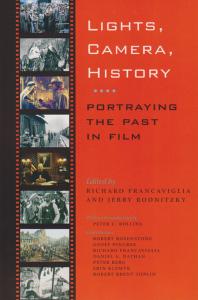

Most ebook files are in PDF format, so you can easily read them using various software such as Foxit Reader or directly on the Google Chrome browser.
Some ebook files are released by publishers in other formats such as .awz, .mobi, .epub, .fb2, etc. You may need to install specific software to read these formats on mobile/PC, such as Calibre.
Please read the tutorial at this link. https://ebooknice.com/page/post?id=faq
We offer FREE conversion to the popular formats you request; however, this may take some time. Therefore, right after payment, please email us, and we will try to provide the service as quickly as possible.
For some exceptional file formats or broken links (if any), please refrain from opening any disputes. Instead, email us first, and we will try to assist within a maximum of 6 hours.
EbookNice Team

Status:
Available4.6
5 reviews
ISBN-10 : 160344503X
ISBN-13 : 9781603445030
Author: Richard V. Francaviglia, Jerry Rodnitzky, Peter C. Rollins
This important volume addresses a number of central topics concerning how history is depicted in film. In the preface, the volume editors emphasize the importance of using film in teaching history: students will see historical films, and if they are not taught critical viewing, they will be inclined simply to accept what they see as fact. Authors of the individual chapters then explore the portrayal of historyand the uses of historyin specific films and film genres.
Robert Rosenstone’s In Praise of the Biopic” considers such films as Reds, They Died with Their Boots On, Little Big Man, Seabiscuit, Cinderella Man, and The Grapes of Wrath. In his chapter, Geoff Pingree focuses on the big questions posed in Jay Rosenblatt’s 1998 film Human Remains. Richard Francaviglia’s chapter on films about the Middle East is especially timely in the post-9/11 world. One chapter, by Daniel A. Nathan, Peter Berg, and Erin Klemyk, is devoted to a single film: Martin Scorsese’s urban history The Gangs of New York, which the authors see as a way of exploring complex themes of the immigrant experience. Finally, Robert Brent Toplin addresses the paradox of using an art form (film) to present history. Among other themes, he considers the impact of Patton and Platoon on military decisions and interpretations, and of Birth of a Nation and Glory on race relations.
lights camera history portraying the past in film
old camera history
lights camera history portraying the past in film pdf
lights camera history
lights camera action history
Tags: Lights, Camera, History, Portraying, the Past, Richard Francaviglia, Jerry Rodnitzky, Peter Rollins